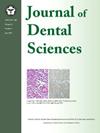Association and relevant factors between objective masticatory performance and subjective masticatory ability among community-dwelling older adults
IF 3.4
3区 医学
Q1 DENTISTRY, ORAL SURGERY & MEDICINE
引用次数: 0
Abstract
Background/purpose
Dentists often focus on masticatory performance (MP) rather than masticatory ability (MA) and treatment expectations when evaluating older adults. This study aimed to determine if MA aligns with MP and to explore influencing factors.
Materials and methods
This cross-sectional study utilized a multi-stage stratified cluster sampling, including one thousand community-dwelling adults aged 60 and older. Participants underwent oral exams and questionnaire interviews, assessing tooth count and Eichner index (EI) levels. MP and MA were quantified using a standard gummy jelly test and a 14-food group questionnaire, respectively. Multivariable linear regressions analyzed correlations between MP, MA, and related factors.
Results
Approximately 25 % of participants exhibited poor MP. Factors contributing to poor MP included increased age rise, low education, number of chronic diseases, tooth loss, without the assistance of removable dentures, and being in EI group C (all P < 0.05). Tooth count showed a significant negative correlation with MP (P < 0.001). Participants' MP declined significantly from good to poor, with MA scores decreasing from 11.96 to 7.52 (P < 0.001). The tooth number was a common factor influencing MA across food groups (all P < 0.05). The decline in MA among older adults was linked to age rise, tooth loss, lack of assistance of removable dentures, and being in EI group C.
Conclusion
Self-rated MA in older adults effectively reflects their MP. Maintaining a high tooth count to meet occlusal support and the use of dentures to assist with tooth loss in older adults help to improve their MA.
社区老年人的客观咀嚼表现与主观咀嚼能力之间的关联和相关因素。
背景/目的:牙科医生在对老年人进行评估时,通常关注的是咀嚼表现(MP),而不是咀嚼能力(MA)和治疗期望。本研究旨在确定 MA 是否与 MP 一致,并探讨影响因素:这项横断面研究采用了多阶段分层群组抽样法,包括一千名 60 岁及以上居住在社区的成年人。参与者接受了口腔检查和问卷调查,评估了牙齿数量和艾希纳指数(EI)水平。MP和MA分别通过标准软糖测试和14种食物组别问卷进行量化。多变量线性回归分析了MP、MA和相关因素之间的相关性:结果:约 25% 的参与者表现出较差的 MP。导致 MP 差的因素包括年龄增大、受教育程度低、慢性病数量多、牙齿脱落、无活动假牙辅助以及属于 EI C 组(均为 P P P P 结论:老年人自评的 MA 能有效反映他们的 MP。保持较高的牙齿数量以满足咬合支持,以及使用假牙帮助老年人解决牙齿缺失问题,都有助于提高他们的 MA。
本文章由计算机程序翻译,如有差异,请以英文原文为准。
求助全文
约1分钟内获得全文
求助全文
来源期刊

Journal of Dental Sciences
医学-牙科与口腔外科
CiteScore
5.10
自引率
14.30%
发文量
348
审稿时长
6 days
期刊介绍:
he Journal of Dental Sciences (JDS), published quarterly, is the official and open access publication of the Association for Dental Sciences of the Republic of China (ADS-ROC). The precedent journal of the JDS is the Chinese Dental Journal (CDJ) which had already been covered by MEDLINE in 1988. As the CDJ continued to prove its importance in the region, the ADS-ROC decided to move to the international community by publishing an English journal. Hence, the birth of the JDS in 2006. The JDS is indexed in the SCI Expanded since 2008. It is also indexed in Scopus, and EMCare, ScienceDirect, SIIC Data Bases.
The topics covered by the JDS include all fields of basic and clinical dentistry. Some manuscripts focusing on the study of certain endemic diseases such as dental caries and periodontal diseases in particular regions of any country as well as oral pre-cancers, oral cancers, and oral submucous fibrosis related to betel nut chewing habit are also considered for publication. Besides, the JDS also publishes articles about the efficacy of a new treatment modality on oral verrucous hyperplasia or early oral squamous cell carcinoma.
 求助内容:
求助内容: 应助结果提醒方式:
应助结果提醒方式:


